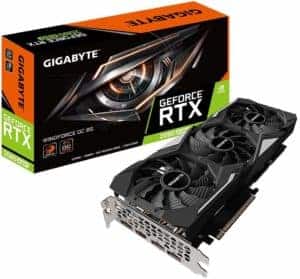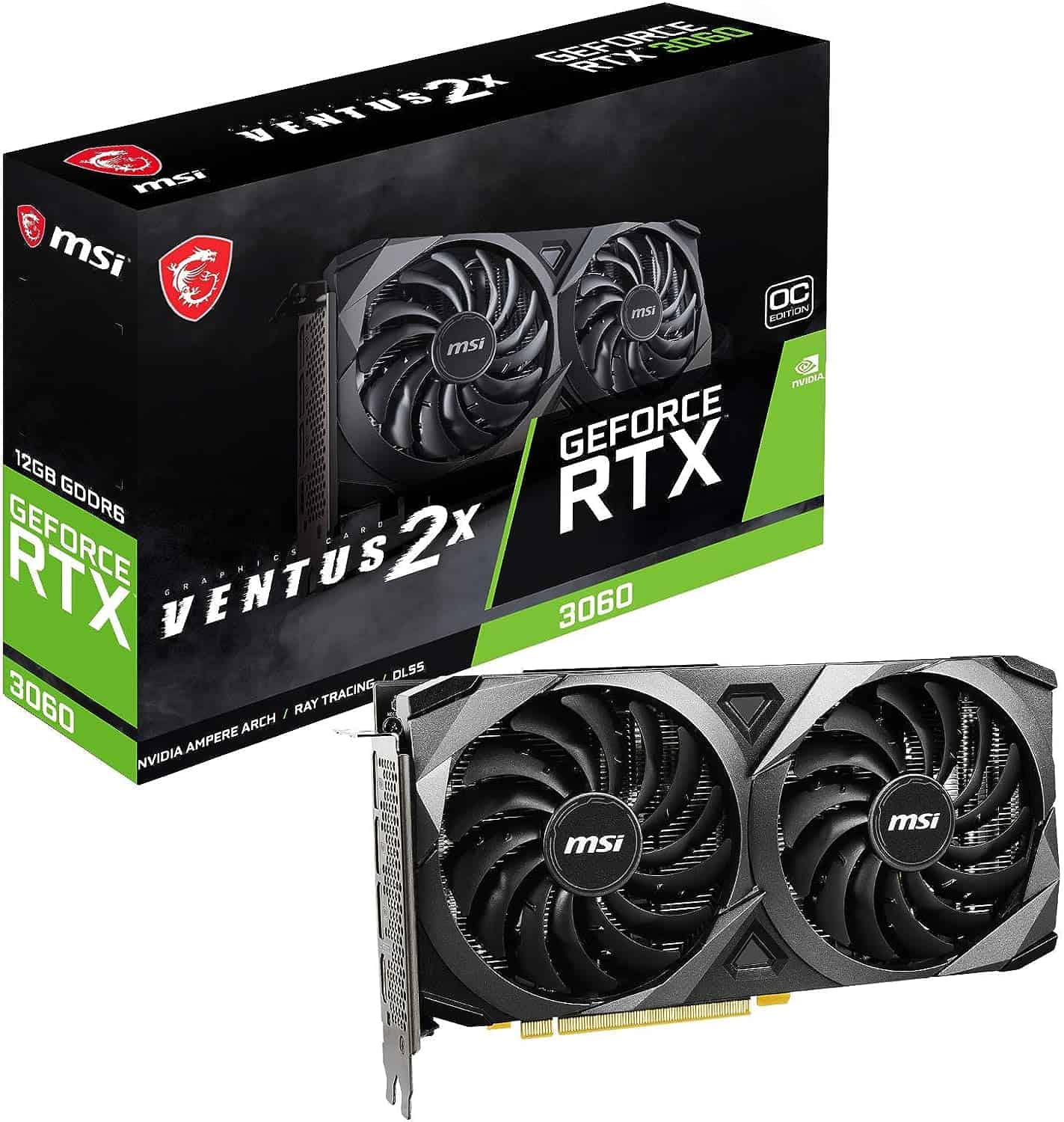Nvidia RTX 2080 Super vs Nvidia RTX 3060 – does 30-series win?

Table of Contents
Who wins in the Nvidia RTX 2080 Super vs Nvidia RTX 3060 showdown? Nvidia’s graphics cards have long been the gold standard for gamers and professionals alike. With the release of the RTX 30-series GPUs, including the Nvidia Geforce RTX 3060, Nvidia promised a significant leap forward in performance and capabilities compared to its predecessors. But how does the RTX 3060 stack up against the older, yet still formidable, RTX 2080 Super? Let’s find out!
But first, if you fancy reading more of our Nvidia comparison guides, take a look at our Nvidia RTX 3060 vs RTX 3060 Ti or Nvidia GTX 1080 vs RTX 3060.
Prime Day is finally here! Find all the biggest tech and PC deals below.
- Sapphire 11348-03-20G Pulse AMD Radeon™ RX 9070 XT Was $779 Now $739
- AMD Ryzen 7 7800X3D 8-Core, 16-Thread Desktop Processor Was $449 Now $341
- ASUS RTX™ 5060 OC Edition Graphics Card Was $379 Now $339
- LG 77-Inch Class OLED evo AI 4K C5 Series Smart TV Was $3,696 Now $2,796
- Intel® Core™ i7-14700K New Gaming Desktop Was $320.99 Now $274
- Lexar 2TB NM1090 w/HeatSink SSD PCIe Gen5x4 NVMe M.2 Was $281.97 Now $214.98
- Apple Watch Series 10 GPS + Cellular 42mm case Smartwatch Was $499.99 Now $379.99
- ASUS ROG Strix G16 (2025) 16" FHD, RTX 5060 gaming laptop Was $1,499.99 Now $1,274.99
- Apple iPad mini (A17 Pro): Apple Intelligence Was $499.99 Now $379.99
*Prices and savings subject to change. Click through to get the current prices.
Nvidia RTX 2080 Super vs Nvidia RTX 3060 – specs at a glance
| Specifications | Nvidia RTX 2080 Super | Nvidia RTX 3060 |
| Architecture | Turing | Ampere |
| Process size | 12 nm | 8 nm |
| Transistors | 13,600 million | 12,000 million |
| Base clock | 1650 MHz | 1320 MHz |
| Boost clock | 1815 MHz | 1777 MHz |
| Memory clock | 1937 MHz15.5 Gbps effective | 1875 MHz15 Gbps effective |
| Memory size | 8 GB | 12 GB |
| Memory bus | 256 bit | 192 bit |
| Bandwidth | 495.9 GB/s | 360.0 GB/s |
| Shading units | 3072 | 3584 |
| SM count | 48 | 28 |
| Tensor cores | 384 | 112 |
| L1 cache | 64 KB (per SM) | 128 KB (per SM) |
| L2 cache | 4 MB | 3 MB |
| TDP | 250 W | 170 |
Specifications comparison
The architectural disparity between the two GPUs is evident in their specifications. The RTX 2080 Super, built on the Turing architecture, features a 12nm process size, while the RTX 3060 adopts the more advanced 8nm process size of Ampere architecture. This difference translates to improved power efficiency and improved game performance for the RTX 3060.
While the RTX 2080 Super boasts higher base and boost clock speeds compared to the RTX 3060, the latter compensates with a larger memory size of 12 GB, compared to the former’s 8 GB. However, the memory bus width and bandwidth favor the RTX 2080 Super, offering superior memory performance.
In terms of core counts and shaders, the RTX 3060 surpasses the RTX 2080 Super with higher numbers. With 3584 shading units and 112 tensor cores, the RTX 3060 demonstrates Nvidia’s progression in hardware architecture design. However, the RTX 2080 Super’s higher SM count and cache sizes hint at its computational prowess and efficiency in handling complex graphics tasks.
Moreover, the thermal design power (TDP) of the RTX 2080 Super is notably higher at 250W compared to the RTX 3060’s 170W. This suggests that the RTX 3060 is more power-efficient, which could appeal to users seeking quieter and cooler gaming experiences.
Performance comparison
When we see only the raw specifications, the RTX 3060 seems to have the upper hand with more CUDA cores and VRAM compared to the RTX 2080 Super. However, benchmark tests and real world performance tell a more nuanced story.
The RTX 2080 Super exhibits a higher OpenCL score of 119,443 compared to the RTX 3060’s score of 89,215. This significant performance difference of over 30% underscores the computational prowess of the RTX 2080 Super, especially in tasks demanding substantial graphical processing power.
The RTX 2080 Super still holds its ground remarkably well regarding gaming performance. It can deliver high frame rates at 1440p resolution in many titles and even handle 4K gaming with respectable performance settings. The RTX 3060, while offering solid performance for 1080p and 1440p gaming, may struggle to maintain consistent frame rates at higher resolutions and ultra-quality settings in some demanding titles.
Both cards offer significant horsepower for content creation tasks such as video editing, 3D rendering, and graphics design. However, the RTX 2080 Super’s additional CUDA cores can provide a slight edge in certain compute-intensive workloads compared to the RTX 3060.
Price comparison
One of the pivotal factors in the comparison is figuring out which GPU has a better value proposal. At launch, the RTX 2080 Super commanded a price tag of $699; an accurate reflection of its premium positioning in the market. In contrast, the RTX 3060 entered the scene with a more accessible price point of $329, offering the best value for budget-conscious gamers and typical consumers who are not willing to pay the top prices.
Nvidia RTX 2080 Super vs Nvidia RTX 3060 – which is better?
The Nvidia RTX 2080 Super certainly outperforms the RTX 3060 across several games and resolutions. Despite having higher CUDA cores and VRAM, the RTX 3060 still lacks in transistors and clock speed. However, each GPU brings its own set of strengths and considerations to the table. While the RTX 2080 Super boasts higher computational power and memory bandwidth, the RTX 3060 shines with its advanced architecture, power efficiency, and competitive pricing.
Wrapping up
We hope this article has aided you in deciding on the best upgrade options for your rig. In this specific scenario, the 30-series does not present superior computer components, therefore, the RTX 2080 Super wins this comparison. However, if you’re looking for something on the cheaper end of the spectrum, and would happily sacrifice some of the benefits from the strongest components in Nvidia’s range, then the RTX 3060 could be the option for you. It all just depends on what you want for your system.



